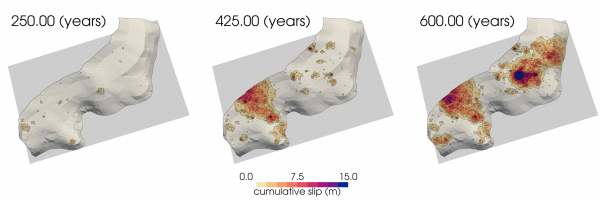Kinematic Earthquake Sequences on Geometrically Complex Faults
Brendan Meade
Harvard University

- Date & Time
- Location
- Online-only seminar via Microsoft Teams
- Summary
Computational earthquake sequence models provide generative estimates of the time, location, and size of synthetic seismic events that can be compared with observed earthquake histories and assessed as rupture forecasts. Here we describe a three-dimensional probabilistic earthquake sequence model that produces slip event time series constrained across geometrically complex non-planar fault systems. This model is kinematic in nature, independent of rheology, and without explicit treatment of stress. Instead, the model's foundation is based on integrating geometric moment accumulation and release with empirical earthquake scaling laws. We use this model to generate synthetic earthquake sequences and show an extension to afterslip where post- and co-seismic slip may be spatially both separate and collocated.
Closed captions are typically available a few days after the seminar. To turn them on, press the ‘CC’ button on the video player. For older seminars that don’t have closed captions, please email us, and we will do our best to accommodate your request.
 Jump to Navigation
Jump to Navigation